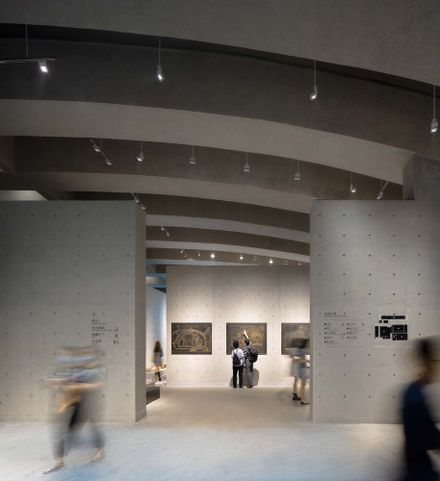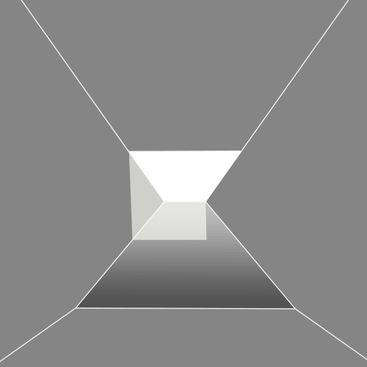
City under City Museum
AREA
3735 m²
PHOTOGRAPHS
Wei Qin
MANUFACTURERS
Haier
LEAD ARCHITECTS
Zhengkong Feng, Xu Wang
DESIGN TEAM
Zhenggong Feng, Zhihong Wang, Xu Wang, Jieming Lu, Xiaowei Qian, Jiawei Wang
ELECTRICAL DESIGN
Yuan Zhang, Tianmeng Wei
HVAC
Yongjun Zhu, Guangying He, Shang Gao, Yuntian Zhao, Botao Sun
WATER SUPPLY AND DRAINAGE DESIGN
Shaojun Chen, Xuebin Xue, Yitao Tang
WEAK CURRENT
Zhixiang Wang, Yeqin Li, Xiao Wang, Yienan Qian
LANDSCAPE
Junteng Zhang, Defeng Yu, Geyan Chen, Mingyan Zhu, Xiangjun Meng, Zirui Wang
CURTAIN WALL
Yun Shen, Guilin Lv, Tichao Lu, Shu Liu
INTERIOR DESIGN
Hao Zhang, Qinqin Ma, Xianlin Cao
CLIENT
Xuzhou Metro Group Co.
SIGNAGE
Dengkun Wang, Guohong Wei
ENGINEERING
Railway No.10 Engineering Group Co., Ltd.
Xuzhou, formerly known as Pengcheng, was selected as the second batch of Chinese National Famous Historical and Cultural Cities in 1986.
According to local chronicles, due to its unique geographical location, the Xuzhou city site has not been relocated and presents a superimposed state of the original site.
In the overall planning for the protection of the historical context of Xuzhou City, the City under the City Museum is a special urban node after the City Wall Museum project.
At the beginning of 2020, the design of the museum began before the excavation work of the site with the starting point of how to deal with the relationship between architecture, ruins, and the city, in order to represent the superimposed urban history.
SPATIOTEMPORAL JOURNEYS: THE URBAN SQUARE & HERITAGE MUSEUM -
While undoubtedly the primary exhibits are the ancient city ruins, the metropolis is also an important exhibit in the "stacked city" exhibition.
Therefore, instead of adopting a conventional linear path that spirals up or down to respond to the historical process of the superimposed city, the museum creates a spatial illusion of a shuttle between the past and present through a journey of time and space:
Firstly, through the spatial infiltration of the courtyard into inner space, the museum establishes a connection between the underground city ruins and the surrounding modern urban environment.
Secondly, by controlling the light in the path and enhancing the temporal and spatial transformation of ancient city ruins and modern urban environments through the contrast of light and darkness, the museum stimulates visitors' bodily perception and immerses them in the spectacle of the "city upon city."
SITE STRATEGIES: MUSEUM & URBAN SQUARE AS A CONTINUUM -
The museum and the dynamic ruins coexist, and the unique feature of the museum is its close integration with the urban square, underground commercial areas, and subway transportation.
Therefore, in handling the relationship between the museum, ruins, and the city, the project needs to treat the museum and the site as a complete continuum.
The site strategy of the museum can be summarized by the action of "lifting" in two directions: the arched structure on the south side forms a semi-open space by projecting outwards, wrapping around the main entrance to the city.
The arched structure on the north side covers the ruins as the main space of the museum while forming an entrance facing the square at the end. Through this action, the museum not only opens up the square but also lifts up the layers of history of the "stacked city."
As a result, the museum not only returns the activity space of the city square to the citizens but also inspires reflection on the past, present, and future of this ancient city.
REPRESENTATION OF PENGCHENG: RUINS, URBAN CONTEXT & URBAN STRUCTURE -
In a series of urban renewal practices in Xuzhou since 2010, we have tried to find scattered historical traces in the corners of the city.
On a larger scale, we use the organic renewal concept of urban acupuncture to systematically connect the cultural context of the ancient city.
In conclusion, the protection and renewal of historical cities are not a "blueprint" type of planning.
For many cities that have undergone a "new look" transformation, carefully combing through historical contexts, tirelessly adjusting design schemes, and patching up the city's structure from point to surface may be the "shortcut" for the revival of such ancient Chinese cities as Xuzhou.

































